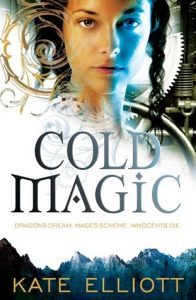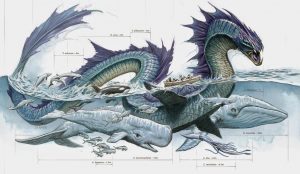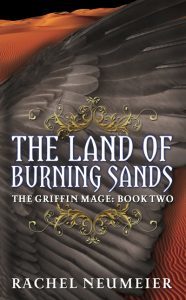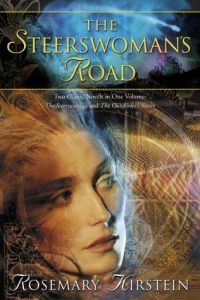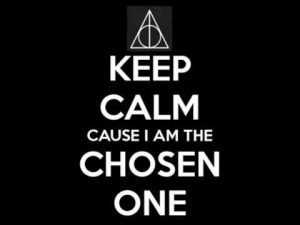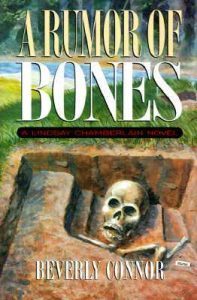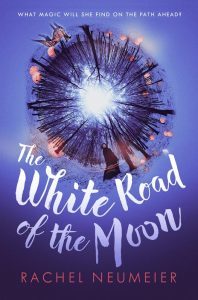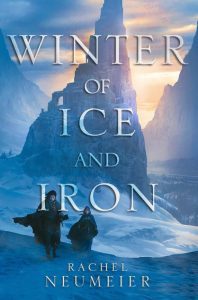Rachel Neumeier's Blog, page 243
January 17, 2018
Fun with statistics: If I Didn’t Have You
So, have you seen this YouTube video of Tim Minchin’s version of “If I Didn’t Have You”?
It has lyrics like this:
So I trust it would go without saying
That I would feel really very sad
If tomorrow you were to fall off something high
Or catch something bad
But I’m just saying
I don’t think you’re special
I-I mean, I think you’re special
But you fall within a bell curve
I mean, I’m just saying I
(Really think that I would)
Probably
(Have somebody else)
Also, it reminds me of this analysis of “soul mates” from xkcd. Which I see now actually refers to the Minchin song, so how about that. I had forgotten about that.
From xkcd:
The odds of running into your soul mate are incredibly small. The number of strangers we make eye contact with each day is hard to estimate. It can vary from almost none (shut-ins or people in small towns) to many thousands (a police officer in Times Square). Let’s suppose you lock eyes with an average of a few dozen new strangers each day. (I’m pretty introverted, so for me that’s definitely a generous estimate.) If 10% of them are close to your age, that’s around 50,000 people in a lifetime. Given that you have 500,000,000 potential soul mates, it means you’ll only find true love in one lifetime out of ten thousand….
Anyway, fun song! If you’re at all math geeky, you should click over and watch the video.
Please Feel Free to Share:









January 6, 2018
Placing rivers in your world
Here’s a post by Marie Brennan at Book View Cafe: New Worlds: Rivers
Rivers in Rokugan do not join together. They separate. That lake in the northeast: okay, it flows down from the mountains, but then . . . does it split? Or is that western branch flowing eastward to the sea, joining up with the eastern branch (which apparently flows through a small mountain range?), only then you have to assume that the major river running from northwest to southeast is the one that splits — just like the one due south of the mountains, down near the coast — or the lake in the eastern edge of the mountains, that somehow both flows north through the mountains and south to the sea — and the tiny little river along the coast that inexplicably has enough flow to form both a substantial bay and split off to form the biggest delta in the Empire — and let’s not even talk about what’s happening in that big patch of mountains at the very bottom of the map. It’s the setting’s equivalent of Mordor; we’ll just chalk it up to evil magic and move on.
I do spend some time gazing at maps and making sure rivers flow downhill! But I have never drawn a landmass that was actually based on a real landmass and put rivers in what were definitely the right spots … wait, I did do that once. I started with a map of Borneo. (Unpublished, so if you can’t think which book that is, that would be why.)
But usually I just draw the map and throw some mountains in there. And then put in rivers that I presume do flow consistently downhill. This is a really fun example that Brennan uses to illustrate how not to situate rivers, but you know what? It also makes me want to do a map where Evil Magic makes rivers flow uphill in some region. That would be entertaining!
Which Brennan recognizes:
However, if you do that, you have to do that. Make it clear to the reader that this is a setting where the normal laws of nature do not apply: rivers diverge instead of converging (and don’t become smaller as a result), water flows uphill in its determination to cross a mountain range, etc.
True! You should definitely at least mention that magic was involved. I’ve done that, though not for rivers specifically. I trust no one came away from WINTER OF ICE AND IRON with the idea that I thought a northern desert made geographical sense. Several times a character mentioned that this desert was created via a magical disaster.
Now I want to create a world where a river flows uphill in its determination to cross a mountain range. Would that be a river spirit? A river dragon? … I just realized I could work that in to my current WIP — not a spirit or dragon, but the interaction of the different layers of the world. Hmm. Don’t know that I’ll find reason to do that, but I sure could.
You know, one hard SF story that has a water element I don’t understand is Kirstein’s Steerswoman series. I don’t get how the “dolphin stairs” can possibly work. I mean … how do the dolphins get back up to the top? Have any of you who’ve read the series got a clear idea of how that works?
Please Feel Free to Share:









January 5, 2018
Blending science and fantasy
From tor.com, this post by J. Patrick Black: Five Books That Blend Science and Fantasy
Great topic! But why, oh why, not go for a list of at least ten? Because wow are some obvious, obvious books missing from Black’s list.
Here are the books he includes:
1. The First Fifteen Lives of Harry August by Claire North. I haven’t read anything by North (yet) but she keeps turning up on all kinds of lists, so she s definitely on my radar.
2. A Wrinkle in Time by Madeleine L’Engle. Okay, that seems justifiable.
3. Out of the Silent Planet by C.S. Lewis. Is that perhaps more like blending philosophy with fantasy? It’s been a long time since I read it.
4. Perdido Street Station by China Miéville. Haven’t read this one yet.
5. Galápagos by Kurt Vonnegut. Um, yeah, I read it, but I didn’t like it and don’t remember it. Vonnegut is just one of those writers who doesn’t work for me.
Now, here are five more that ought to be included on any list of this kind:
5. PERN, FOR HEAVEN’S SAKE. How could anybody leave off Anne McCaffery’s Pern books? Dragons! Telepathy! Time travel! Space ships and alien planets and physics! Wow, is Pern obvious or what?
6. Lord of Light by Zelazy. What a wonderful book this is, and I think it qualfies.
7. The Spiritwalker trilogy by Kate Elliot, with those wonderful Troodon-derived feathered people. Fantastic science elements there.
8. The Lady Trent books by Marie Brennan! Come on, this series jumps up and down and waves a big red flag. Just look at the biologically oriented covers!
9. The second Griffin Mage book, Land of Burning Sands, totally fits this list. It’s not like I made up all that stuff about materials science, you know.
10. The Steerswoman books by Rosemary Kirstein. Not that they are exactly fantasy with science elements. More, you know, totally straight science fiction thoroughly disguised as fantasy.
Please Feel Free to Share:









Is it possible to publish too many books?
Here at a site called Intellectual Takeout, this: Way Too Many Books Are Being Published
In the past week, I’ve seen online a number of lists bearing some title to the effect of “Best Books I Read in 2017.”
I somewhat enjoy looking at these lists, both for their recommendations, and for the windows they provide into their composers.
But I must admit that I mostly find them stressful and anxiety-inducing. They are yet another reminder of how many great books in various genres are being written, and of how little time I have to read them.
This post is from Daniel Lattier, vice-president of Intellectual Takeout.
Well, I have to say, my initial reaction is, Gosh, Daniel, maybe you should chill out? Recognizing the obvious truth that we are all missing practically everything worth reading is not so stressful if you also recognize that this is inevitable and just let it go.
Lattier goes on:
As a culture, we can be somewhat proud of having this problem of too many books. It’s indicative of civilization that has enjoyed several hundred years of uninterrupted intellectual development. Plus, arguably the greater problem is not that we in America are inundated with books, but that one-third of American adults did not read a single book in the past year.
At the same time, however, I cannot help but feel that the exponential proliferation of books is a sign of our culture’s loss of an ultimate, shared purpose to life, and a consensus on how to achieve that purpose. Devoid of this consensus, each of us is left to search for the fragments of truth (or more often than not, mindless entertainment) in our frantic, scattered regimen of reading each year.
I agree with the first point, but the second point seems a trifle . . . frantic, possibly. This is the USA we’re talking about (it is explicitly publishing in the USA that Lattier addresses in his article), a massively varied and diverse country. I don’t know that we’ve had an ultimate shared purpose any time in the past 150 years at least, probably more, and I don’t know that I think that’s a goal to strive for.
Possibly striving for the publication of immense numbers of books that suit the tastes and needs of many different readers is good enough? Even if some of us like to read for (gasp!) entertainment? (Leaving aside this notion of *mindless* entertainment, which is arguable in a whole different way.)
If a broadly shared cultural background is important, and perhaps it is, then addressing the question of what books to assign in schools would seem dramatically more relevant than reducing the number of books published overall.
Also, one might justifiably point out, dramatically less authoritarian. One does rather assume Lattier sees himself as the Chosen One who gets to select which books get published. That is ridiculous, as obviously I myself would be far better suited for that role.
Please Feel Free to Share:









January 4, 2018
Copy editors are your friends, usually
I enjoyed this post by John Gilstrap about copy editors, over at Kill Zone Blog: Note to Copy Editor
Just when I think I am done with the story–about the time when I am moving on to the next one–I get the copy edits back. For the most part, copy editors are freelancers, and they may or may not have any familiarity with my work, or even with the genre in which I write. It seems to me (and I say this with a huge amount of respect) that their primary skills are an encyclopedic knowledge of the rules of grammar, and the ability to process the tiniest of details. Combine those traits with a research instinct that borders on obsessive-compulsive, and the ideal copy editor is born.
I would add, a startling ability to remember details from page 2 when they hit something contradictory on page 453. I am pretty good at that, but most copy editors seem to have a magical talent for that kind of memory.
I’ve never had a bad experience with a copy editor. I’ve had copy editors who suggested tons of specific changes, many of which I actually accepted; and copy editors who mostly just said “Rep okay?” and left it to me to fix when I used the same word three times in one paragraph, which is generally not okay but pretty hard for me to avoid.
I’ve never had anything like this delightful example from the post:
At times, knowledge of grammar gets in the way. An example that comes to mind is from a few books ago when the copy editor changed “Jonathan looked at the door the kid had just come through” to “Jonathan looked at the door whence the kid had just come.” While grammatically correct, “whence” is a word that has no place in commercial thrillers. The same copy editor took it upon herself to replace Jonathan Grave’s beloved Colt 1911 .45 with a pistol her research had told her would be more appropriate to his purposes.
Hah! I guess that particular copy editor doesn’t read thrillers, but frankly the tone of the book she was reading ought to have made it crystal clear to her that she shouldn’t suggest phrases like “whence the kid had just come.” Good heavens, what a ridiculous change. If the copy editor is that much of a stickler, she ought to have suggested “through which the kid had just come,” which wouldn’t sound so silly although the author might still prefer the original.
The copy editor who suggested lots of phrases in one of mine stuck to a high fantasy style; that’s why I could glance at her changes and accept a lot of them.
I did have a copy editor who wanted to change “arquebus” to “harquebus” in MOUNTAN. I don’t know why. Both are acceptable. In my firm opinion, the first spelling just looks better on the page, so I changed them all back with a note that I REALLY prefer the former spelling to the latter. Probably not a single reader would have cared one way or the other, but it pleases me to see my preferred spelling on the page.
Changing the type of pistol is pretty egregious.
I also preferred the paper manuscript to a Word file with track changes turned on . . . I detest track changes . . . but I don’t find it makes the process of going over copy edits as arduous as Gilstrap does, fortunately. Plus I used to worry about a marked-up manuscript getting lost in the mail. That would be a right nuisance. Not a concern with emailed manuscripts.
Gilstrap then shows us the letter he includes for his copy editors. One item stands out for me, in glowing red letters ten feet tall:
No semicolons, grammar notwithstanding.
What a terrible, terrible idea.
Every now and then a deliberate run-on or comma splice can be an excellent choice. Comma splices in dialogue or thoughts can give a breathless quality that is hard to achieve without them. But . . . comma splices everywhere, all the time? Bad, bad idea. If you do this, then I, at least, will probably read no more than one of your books. If that.
I suppose it would be different if you write in short complete sentences and never, or hardly ever, produce a comma splice by use of this no-semicolon rule. Perhaps that is the case with Gilstrap. But I was just reading an ebook where somehow a lot of comma splices had appeared — most of them were not there in the original book — and I found it virtually unreadable and wound up just deleting it from my Kindle.
I will add, I’ve never yet had a copy editor who tried to make dialogue grammatically correct when I plainly intended for it to be grammatically incorrect. I hope I haven’t jinxed myself by saying that, but so far every single copy editor I’ve worked with understood style and tone and worked with my book, not against it.
So, yeah, still a fan of copy editors! I hope I never feel compelled to add a letter to a copy editor as Gilstrap does.
Please Feel Free to Share:









January 3, 2018
May vs Might
I thought I would post about this distinction, since I mentioned it yesterday and also because it’s a confusing distinction to talk about and some online sources don’t do a very good job of nailing down the misuse of “may” that was bothering me in Beverly Conner’s books.
So, here we go:
1) May and might are not interchangeable, no matter how many internet sources tell you they are. This is because the two words are not only used to express more or less likely conditionals. Here at Grammar Girl, it says: The difference between may and might is subtle. They both indicate that something is possible, but something that may happen is more likely than something that might happen. So you may go to a party if Matt Damon invites you, but you might go to a party if your least favorite cousin invites you.
This is true, but not exhaustive. I believe it’s this usage that causes various authorities to tell you the two words are basically interchangeable.
2) However, an important difference occurs when you are talking about things that might have happened, but didn’t; versus things that might have happened and you’re not sure whether they did or not.
“My mother was hit by a car and she may have hurt her back” should be followed by something like “She’s having an MRI on Monday to find out.” In this case, the “may” is used to express uncertainty about whether she is or is not hurt.
“My mother was hit by a car! She might have been badly hurt!” should be followed by something like “Thank God she’s all right!” because in this case, the “might” clear indicates that the uncertainty is in the past and she wasn’t hurt. Both the past and the thing not occurring are indicated by “might.”
According to the Oxford English Dictionary online, while you could have some leeway if the situation isn’t clear, you really shouldn’t use “may” if the situation that might have occurred, didn’t:
But there is a distinction between may have and might have in certain contexts. If the truth of a situation is still not known at the time of speaking or writing, either of the two is acceptable:
By the time you read this, he may have made his decision.
I think that comment might have offended some people.
If the event or situation referred to did not in fact occur, it’s better to use might have:
The draw against Italy might have been a turning point, but it didn’t turn out like that.
It’s this specific use of “may” instead of “might” that caught my eye in Conner’s books — and in others. I think if you pay attention, you’ll see that almost any writer you think of as more literary or more a stylist or just especially skilled will make this distinction and use “might” instead of “may” in those contexts.
Also, not sure I’ve seen this at all in the 4th Lindsay Chamberlain mystery, so either that’s pure chance or a copy editor who’s a stickler for this usage or Conner’s trained her ear for this distinction. I know it was a copy editor who finally made me pay attention the the “that” / “which” distinction. More recently, I somehow lost my ear for the “was” versus “were” in the subjunctive mood. Two or three copy editors have more or less been enough for me to retrain my ear for the subjunctive “were.”
No doubt that distinction will vanish eventually, but for now, I prefer to have an ear trained for the more formal usage so that I can choose to disregard it, not accidentally disregard it. I’m sure a less formal character — Natividad, say — might use “was” in dialogue. But Grayson wouldn’t.
Also, in high fantasy, more formal and correct usages are almost always appropriate. That’s part of why elves and hobbits don’t sound the same in Middle Earth. Can you imagine a writer like Tolkien shrugging off these distinctions? Of course not.
That’s why an author should know the most formal and correct usage for these sorts of things as well as the more casual usage. It’s all very well to declare that in modern English no one cares, but clarity of communication not the only goal when writing fiction and the most casual, modern style is not always appropriate.
Please Feel Free to Share:









January 2, 2018
The 5 craziest things we learned about the universe in 2017
Via The Washington Post, this: The 5 craziest things we learned about the universe in 2017
The article starts with “the most insane asteroid we’ve ever seen,” moves on with a tiny little Neptunian moon that has a ring, and ends with “the fact that the universe shouldn’t even exist” —
The Big Bang is believed to have produced equal parts matter and antimatter — but since the only difference between these two is their opposite electrical charges, the reaction should have resulted in a violent eruption.
Scientists at the European Organization for Nuclear Research have spent their careers trying to figure out why this didn’t happen. They’ve tried to find differences in the particle’s mass and electrical charge, among dozens of other properties, but everything comes up identical.
“All of our observations find a complete symmetry between matter and antimatter, which is why the universe should not actually exist,” Christian Smorra, the study’s lead author, said. “An asymmetry must exist here somewhere but we simply do not understand where the difference is. What is the source of the symmetry break?”
Lots of super-snazzy astronomical stuff over the past couple of years. I wonder what we’ll discover in 2018?
Please Feel Free to Share:









Recent Reading: Beverly Conner’s mysteries
My mother recently wanted to go buy a whole lot of very cheap books at the perpetual library sale at the Park Hills Library, an admirable method used by that library to keep less popular books in circulation. You’d think no one in our family received books as gifts for Christmas, which I assure you is not true. I think my mother feels more comfortable if she has fifty books or more on her TBR stacks, which I’m sure we can all understand.
Naturally I went along, thus increasing my already tottering TBR pile by five or so titles. Except this quickly expanded to ten because one of the books I picked up was the second book of Beverly Conner’s mystery series featuring archeologist and forensic anthropologist Lindsay Chamberlain. I liked it a lot and now I’m rapidly reading through the entire five-book series. So far I’ve read three: Rumor of Bones, Questionable Remains, and Dressed to Kill.
So far I haven’t figured out the actual mystery in any detail for any of the books, which is a nice perk, although I don’t actually read mysteries for the mystery. I read them for character and setting, but I do like them better if I am also baffled by the mystery or surprised by the plot. In these, I definitely appreciate Lindsay Chamberlain as the protagonist. The archeology and forensic anthropology are both so interesting:
Lindsay took the brush and dusted the skull. It had been partially flattened from years of decay, heavy topsoil, and, Lindsay supposed, from farm equipment running over it, but certain features caught her eye. First, the very narrow nasal passage, then the slightly rectangular eye sockets: telltale signs of a Caucasian skull. She looked closely at the teeth, which she believed had an overbite instead of the usual even-edged occlusion of people of Asian ancestry. Lindsay touched the zygomatic arch with her finger. She would have to wait until the skull was out of the ground, but she was relatively sure that these were not the forward-projecting cheekbones of an Indian skull, but the more recessed ones of a European.
It’s all very interesting! And not dry in the least, at least not for me, because all these details are woven together with Lindsay’s personal reactions and with human-level stories of the dead, what they were feeling and thinking, what their lives involved. I grant you, if you are not somewhat interested in archeology or forensics or both, your mileage might vary.
Other notable features of this series:
1) Lindsay herself is a good protagonist. She is curious, determined, highly competent, kind and yet capable of emotional detachment; also strongly inclined to imagine the lives (and deaths) of the people she encounters. Thus she gets involved despite herself. She’s very good at spotting connections between things, so people come to her for help sorting things out. There’s no feeling that she is trying to involve herself in things she ought to stay out of; it’s more that even though she’s trying to stay out of things, her desire to help the people who come to her plus her own curiosity won’t let her. It’s all pretty believable, despite the occasional odd coincidence required to keep Lindsay at the center of events. Less believable are the slightly too frequent moments when she goes off by herself, nobody knows where she is, and she gets assaulted or falls down a well or whatever. This might not be as noticeable if I weren’t zipping through the series so fast.
I will add that Lindsay is startlingly good at a number of things not related to her profession. For example, she’s a professional-level dancer. This is okay with me, but only just barely. It seems a bit much. In the same way, I do wish her mother hadn’t given her a stallion as a gift. I don’t really think casual riders ought to own stallions and I have a hard time believing a real expert would give her daughter one. It feels to me like a detail added by a romantically inclined author who doesn’t really know that much about horses. I could be wrong, obviously. Maybe lots of Arabian stallions are actually easy to own and train.
2) The secondary characters are fairly well drawn, though most have a fairly small role. I’m finding this off-and-on thing with her sometime-boyfriend / sometime-dancing partner / sometime colleague Derrick a bit off-putting. I feel he ought to be able to cope with her occasional involvement with crimes considering she is often consulted by the police. It seems to me he wants her to be a smaller, less skilled person than she is and I don’t like that very much. On the other hand, in the third book, I like her brother a lot. As far as I’m concerned, that’s a much more interesting relationship.
3) I feel I should mention that these are not cozy mysteries. Despite what I just said about Derrick, the romantic elements are minimal, the crimes can be more awful than one expects in a cozy – thankfully these are not shown explicitly – and also various scenes are much more tense and suspenseful than I’d expect in a cozy. The extended cave scene in the second book is really something. You wouldn’t want to start reading that part and then quit in the middle, let me tell you. It reminded me very much of the bit in the Touchstone trilogy where Cassandra is lost in that underwater cavern system. Terrifying.
4) The writing is basically okay. It’s straightforward and doesn’t call attention to itself. These are mysteries my mother would like because they’re well-enough written and because there’s no crude language and no explicit casual sex – she avoids a lot of modern mysteries because of those elements. Also, I don’t think the writing comes across as too textbook-y, even when something technical is being explained. However, I am going to add that the writing isn’t totally flawless either.
First, Conner often uses the ordinary past tense when the past perfect would be better. This has seemed to get increasingly common for decades in non-literary writing, but even though it isn’t rare, it’s grating. Second, Conner sometimes says “may” when she means “might.” That’s not unusual either, but I wish she wouldn’t. If she doesn’t reliably hear the difference by ear, her copy editor ought to correct that mistake and she ought to let those corrections stand. Third, the dialogue is often good, sometimes clever, and almost always serviceable, but it’s not unusual for Conner characters to speak without contractions when their dialogue would sound more natural with contractions. Unlike, say, Grayson Lanning, none of them have a formal enough manner to suggest they ought to speak that way.
All these issues are pretty minor and in fact my mother didn’t notice any of them even though frank errors leap out at her as though outlined in neon. If style isn’t super-important to you, then if these mysteries sound like the kind of thing you’d enjoy, you should certainly try them. If you’re a writer or aspiring writer, though, you might want to contrast the use of past tense here with the flawless use of past and past perfect in, say, Virginia Lanier’s bloodhound mysteries, Barbara Hambly’s Benjamin January mysteries, Rex Stout’s Nero Wolfe mysteries, or any mysteries that are on the more literary side, such as Louise Penny’s Inspector Gamache series.
Overall, the fact that I’m zipping through this series in doublequick time ought to suggest, correctly, that the stylistic flaws aren’t bothering me very much. If you try these, I hope you enjoy them as much as I am.
Please Feel Free to Share:









Recent Reading: Beverly Cooper’s mysteries
My mother recently wanted to go buy a whole lot of very cheap books at the perpetual library sale at the Park Hills Library, an admirable method used by that library to keep less popular books in circulation. You’d think no one in our family received books as gifts for Christmas, which I assure you is not true. I think my mother feels more comfortable if she has fifty books or more on her TBR stacks, which I’m sure we can all understand.
Naturally I went along, thus increasing my already tottering TBR pile by five or so titles. Except this quickly expanded to ten because one of the books I picked up was the second book of Beverly Cooper’s mystery series featuring archeologist and forensic anthropologist Lindsay Chamberlain. I liked it a lot and now I’m rapidly reading through the entire five-book series. So far I’ve read three: Rumor of Bones, Questionable Remains, and Dressed to Kill.
So far I haven’t figured out the actual mystery in any detail for any of the books, which is a nice perk, although I don’t actually read mysteries for the mystery. I read them for character and setting, but I do like them better if I am also baffled by the mystery or surprised by the plot. In these, I definitely appreciate Lindsay Chamberlain as the protagonist. The archeology and forensic anthropology are both so interesting:
Lindsay took the brush and dusted the skull. It had been partially flattened from years of decay, heavy topsoil, and, Lindsay supposed, from farm equipment running over it, but certain features caught her eye. First, the very narrow nasal passage, then the slightly rectangular eye sockets: telltale signs of a Caucasian skull. She looked closely at the teeth, which she believed had an overbite instead of the usual even-edged occlusion of people of Asian ancestry. Lindsay touched the zygomatic arch with her finger. She would have to wait until the skull was out of the ground, but she was relatively sure that these were not the forward-projecting cheekbones of an Indian skull, but the more recessed ones of a European.
It’s all very interesting! And not dry in the least, at least not for me, because all these details are woven together with Lindsay’s personal reactions and with human-level stories of the dead, what they were feeling and thinking, what their lives involved. I grant you, if you are not somewhat interested in archeology or forensics or both, your mileage might vary.
Other notable features of this series:
1) Lindsay herself is a good protagonist. She is curious, determined, highly competent, kind and yet capable of emotional detachment; also strongly inclined to imagine the lives (and deaths) of the people she encounters. Thus she gets involved despite herself. She’s very good at spotting connections between things, so people come to her for help sorting things out. There’s no feeling that she is trying to involve herself in things she ought to stay out of; it’s more that even though she’s trying to stay out of things, her desire to help the people who come to her plus her own curiosity won’t let her. It’s all pretty believable, despite the occasional odd coincidence required to keep Lindsay at the center of events. Less believable are the slightly too frequent moments when she goes off by herself, nobody knows where she is, and she gets assaulted or falls down a well or whatever. This might not be as noticeable if I weren’t zipping through the series so fast.
I will add that Lindsay is startlingly good at a number of things not related to her profession. For example, she’s a professional-level dancer. This is okay with me, but only just barely. It seems a bit much. In the same way, I do wish her mother hadn’t given her a stallion as a gift. I don’t really think casual riders ought to own stallions and I have a hard time believing a real expert would give her daughter one. It feels to me like a detail added by a romantically inclined author who doesn’t really know that much about horses. I could be wrong, obviously. Maybe lots of Arabian stallions are actually easy to own and train.
2) The secondary characters are fairly well drawn, though most have a fairly small role. I’m finding this off-and-on thing with her sometime-boyfriend / sometime-dancing partner / sometime colleague Derrick a bit off-putting. I feel he ought to be able to cope with her occasional involvement with crimes considering she is often consulted by the police. It seems to me he wants her to be a smaller, less skilled person than she is and I don’t like that very much. On the other hand, in the third book, I like her brother a lot. As far as I’m concerned, that’s a much more interesting relationship.
3) I feel I should mention that these are not cozy mysteries. Despite what I just said about Derrick, the romantic elements are minimal, the crimes can be more awful than one expects in a cozy – thankfully these are not shown explicitly – and also various scenes are much more tense and suspenseful than I’d expect in a cozy. The extended cave scene in the second book is really something. You wouldn’t want to start reading that part and then quit in the middle, let me tell you. It reminded me very much of the bit in the Touchstone trilogy where Cassandra is lost in that underwater cavern system. Terrifying.
4) The writing is basically okay. It’s straightforward and doesn’t call attention to itself. These are mysteries my mother would like because they’re well-enough written and because there’s no crude language and no explicit casual sex – she avoids a lot of modern mysteries because of those elements. Also, I don’t think the writing comes across as too textbook-y, even when something technical is being explained. However, I am going to add that the writing isn’t totally flawless either.
First, Cooper often uses the ordinary past tense when the past perfect would be better. This has seemed to get increasingly common for decades in non-literary writing, but even though it isn’t rare, it’s grating. Second, Cooper sometimes says “may” when she means “might.” That’s not unusual either, but I wish she wouldn’t. If she doesn’t reliably hear the difference by ear, her copy editor ought to correct that mistake and she ought to let those corrections stand. Third, the dialogue is often good, sometimes clever, and almost always serviceable, but it’s not unusual for Cooper’s characters to speak without contractions when their dialogue would sound more natural with contractions. Unlike, say, Grayson Lanning, none of them have a formal enough manner to suggest they ought to speak that way.
All these issues are pretty minor and in fact my mother didn’t notice any of them even though frank errors leap out at her as though outlined in neon. If style isn’t super-important to you, then if these mysteries sound like the kind of thing you’d enjoy, you should certainly try them. If you’re a writer or aspiring writer, though, you might want to contrast the use of past tense here with the flawless use of past and past perfect in, say, Virginia Lanier’s bloodhound mysteries, Barbara Hambly’s Benjamin January mysteries, Rex Stout’s Nero Wolfe mysteries, or any mysteries that are on the more literary side, such as Louise Penny’s Inspector Gamache series.
Overall, the fact that I’m zipping through this series in doublequick time ought to suggest, correctly, that the stylistic flaws aren’t bothering me very much. If you try these, I hope you enjoy them as much as I am.
Please Feel Free to Share:









January 1, 2018
Excellent moments in 2017
Among its various ups and downs, 2017 brought us many things worth celebrating, from touching to the truly important. In no particular order:
1) The eclipse
It was amazing.
2) A whopping eighty bystanders formed a human chain to rescue drowning swimmers in Florida.
That’s pretty impressive. I think nearly everyone is very willing to get involved and help in emergencies, as long as one person leaps in to give direction. This article doesn’t point out the leaders of this effort, but I bet there were a few who got everyone else moving and organized. Good for them — and for everyone who took part in the rescue.
3) Along with uncountable acts of kindness and heroism, Southwest Airlines bent their usual regs a trifle to rescue a bunch of pets from Houston in the aftermath of Hurricane Harvey. Good for Southwest!
4) The WHO brought out a new vaccine against cholera, one of the great killers of the world. Perhaps the end of cholera is in sight.
5) Women in Saudi Arabia finally gained the legal right to travel, study, and drive.
6) Infection with the horrible Guinan worm parasite has practically been eradicated. Polio is also on the verge of being eliminated. Three cheers for modern medicine!
7) Peggy Whitson picked up a new record for most cumulative hours in space by an American.
8) People have come up with ways to restore living corals on parts of the Great Barrier Reef.
9) Many excellent books came out, including these:
10) Honey was lost, and found:
Here’s hoping that 2018 holds many good things for us all.
Please Feel Free to Share:










